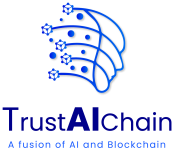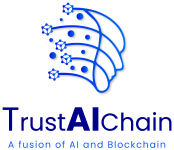Understanding Generative AI and Blockchain
Generative AI
Generative AI refers to artificial intelligence systems capable of generating new content, such as images, music, and text, by learning patterns from existing data. Notable examples include Generative Adversarial Networks (GANs), Variational Autoencoders (VAEs), and Transformer-based models like GPT-4. These models can produce highly realistic and intricate artworks, mimicking various artistic styles and creating new genres.
Blockchain Technology
Blockchain is an immutable, decentralized ledger technology that keeps track of transactions on numerous computers. It guarantees data security, integrity, and transparency without requiring a central authority. Every transaction, or block, is cryptographically connected to the one before it, creating a chain that is almost hard to break in the past. Blockchain technology has several uses outside of the cryptocurrency space, including digital identity, voting systems, and supply chain management.
Generative AI in Art Conserving
In the field of art preservation, generative AI provides several revolutionary possibilities:
Digital Restoration: Digital repair is one of the main uses of generative AI in art preservation. Historical artworks are prone to various problems, including missing portions, cracks, and fading hues. Generative AI models can analyze these art pieces, identify patterns, and produce high-fidelity restorations. These models can digitally repair damaged areas to their original splendor by training on large datasets of comparable artworks.
Replication and Simulation:Generative AI can also create highly accurate replicas of artworks. These replicas can be used for educational purposes, exhibitions, and even as replacements for original pieces that are too fragile to be displayed. Moreover, AI can simulate how an artwork might have looked in different historical contexts, providing invaluable insights for art historians and researchers.
Style Transfer:Style transfer is another fascinating application of Generative AI. This technique involves applying the style of one artwork to another, creating a new piece that retains the original’s content but adopts the source’s stylistic elements. This can be particularly useful for preserving the stylistic techniques of historical artists, allowing contemporary audiences to experience classic styles through modern subjects.

Blockchain in Art Preservation
Blockchain technology addresses several critical challenges in art preservation, particularly those related to provenance, ownership, and authenticity:
Provenance and Authenticity: One of the most significant issues in the art world is verifying the provenance and authenticity of artworks. Blockchain can provide a transparent and immutable record of an artwork’s history, from its creation to its current ownership. By recording every transaction and transfer of ownership on a blockchain, stakeholders can easily trace an artwork’s lineage, reducing the risk of forgery and fraud.
Secure Storage and Access: Blockchain can also be used to store and manage digital representations of artworks securely. Digital art, in particular, is susceptible to unauthorized copying and distribution. By storing digital art on a blockchain, artists, and collectors can ensure that only authorized parties can access the original files. Additionally, smart contracts can be used to enforce usage rights and royalties, ensuring that artists are fairly compensated for their work.
Decentralized Art Marketplaces: Blockchain enables the creation of decentralized art marketplaces, where artists can sell their works directly to buyers without intermediaries. These marketplaces can operate transparently, with all transactions recorded on the blockchain. This reduces transaction fees and ensures artists retain greater control over their work and its distribution.

The Synergy of Generative AI and Blockchain in Art Preservation
The combination of Generative AI and Blockchain presents a powerful solution for preserving and protecting artworks. Here are several ways in which these technologies can work together:
Enhancing Digital Provenance: Generative AI can create unique digital fingerprints for artworks, which can then be recorded on a blockchain. This ensures that each artwork has a verifiable and immutable record of its creation and subsequent modifications. By combining AI-generated metadata with blockchain records, stakeholders can confidently verify the authenticity and provenance of digital and physical artworks.
Secure Digital Archives: Generative AI can assist in creating detailed digital archives of artworks, capturing intricate details that might be lost over time. These digital archives can be stored on a blockchain, ensuring their security and immutability. Researchers, historians, and art enthusiasts can access these archives, confident that the information is accurate and tamper-proof.
Tokenization and Fractional Ownership: Blockchain enables the tokenization of artworks, where a digital token on the blockchain represents each piece. Generative AI can create detailed digital representations of these artworks, which can then be divided into fractions. This allows for fractional ownership, enabling multiple stakeholders to invest in a single piece of art. Smart contracts can manage the distribution of profits and ownership rights, making art investment more accessible and transparent.
Enhanced Authenticity and Provenance: By leveraging blockchain’s immutable ledger, the provenance and authenticity of artworks can be irrefutably established. Generative AI enhances this process by creating detailed digital fingerprints and metadata that further validate an artwork’s history and origin.
Increased Accessibility and Education: Digital replicas and style transfers created by Generative AI can be used for educational purposes, making art more accessible globally. Blockchain ensures these digital assets are securely stored and distributed, preserving them for future generations.
Reduced Costs and Increased Efficiency: Decentralized art marketplaces powered by blockchain reduce transaction fees and eliminate the need for intermediaries, making the buying and selling art more efficient. Generative AI automates the restoration and replication processes, significantly reducing the time and cost of preserving artworks.

Finally, the fusion of Generative AI and Blockchain holds immense potential for revolutionizing the field of art preservation. These technologies offer innovative solutions to longstanding challenges, enhancing the authenticity, accessibility, and security of artworks. As we continue to explore the capabilities of Generative AI and Blockchain, we can look forward to a future where art is preserved, enriched, and reimagined in ways previously thought impossible. By embracing these cutting-edge technologies, we can ensure that today’s cultural treasures are safeguarded for tomorrow’s generations.








2 Responses
Your blog is a beacon of light in the often murky waters of online content. Your thoughtful analysis and insightful commentary never fail to leave a lasting impression. Keep up the amazing work!
Hello Cecelia,
Thank you for finding the blog useful and for the nice compliment. We hope to continue to serve you and others!